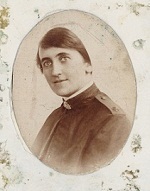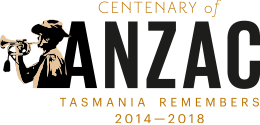Elsie Tranter (Cumming)
The
legacy of Sister Elsie May Tranter is not just of her service as a brave and
professional nurse on th e Western Front in France, but in keeping a diary that
is engaging and compelling and has since been published as the book, In All These Lines: The Diary of Sister Elsie Tranter: 1916-1919 by J.M. Gillings and J. Richards.
e Western Front in France, but in keeping a diary that
is engaging and compelling and has since been published as the book, In All These Lines: The Diary of Sister Elsie Tranter: 1916-1919 by J.M. Gillings and J. Richards.
Elsie Tranter was born in 1885 in Fyansford, near Geelong in Victoria, and joined the Australian Army Service, on 17 August 1916. She embarked for Europe in December 1916.
Sister Tranter was one of nearly 2,500 Australian nurses who served in World War One. Her diary recorded an almost daily account of life on the Western Front, capturing the war experience, ferocious battles, horrific injuries, and death.
“…the hospital is on the right side with row after row of tents and huts…and just at the back is the railway siding where the ambulance trains load and unload their suffering passengers…Can you form any idea of the work that goes on and of those suffering in all those lines?...If we did not have to work hard all the time, we could not stand the strain and awfulness of it all. This war is absolute hell. We see and hear all day and every day the results of its frightfulness. We can hear the guns quite plainly here.”
Sister Tranter was one of a small number of Australian nurses who administered anaesthetic. By 24 April 1918, she had given 227 anaesthetics and wrote: “It is very tiring and trying work, for most of the men are badly wounded and give us a lot of anxiety”.
While anaesthetising a Tasmanian soldier on 29 March 1918, Sister Tranter was visited by King George V:
“…His Majesty the King …came into the theatre ….. I had just started to anaesthetize a Tasmanian boy, so I removed the mask to let him see the King. As there were two cases of gas gangrene, I think His Majesty was glad to get away to the outside air.”
Armistice
Sister Tranter was on duty when Armistice was declared at 11am on 11 November 1918, writing, “…. the church bells pealed out, bugles were blown, guns boomed and France went almost mad with joy”. However, nursing wounded and dying soldiers, she had mixed emotions: “….Our day … was altogether rather a heartbreaking one …we did not feel able to enter fully into the meaning of the joy of armistice”.
Future husband
Sister Tranter met her future husband, Tasmanian soldier Gordon Cumming, on the Western Front. In 1919, Sister Tranter returned to Australia and was discharged from the army in November that year. In 1922, Elsie Tranter married Gordon in Melbourne. The couple settled in Launceston and lived at Invermay before building a home at Newstead which was called “Gezaincourt”, named in honour of the place in France where Gordon proposed.
Diary’s survival keeps Elsie’s memory alive
Sister Tranter’s diary survived World War One and the 1929 floods in Launceston.
Elsie Tranter died in 1968 in Launceston, and her diary was passed onto her two daughters. One of the daughters lodged the diary with the State Library of Victoria. In 2006, the diary was published. Extracts from the diary have also been used in More than Bombs and Bandages by Dr Kirsty Harris; ANZAC Girls by Peter Rees (which screened as a docudrama on ABC TV in 2014), and The Daughters of Mars by Thomas Keneally.
Elsie Tranter’s medals, the British War Medal and the Victory Medal, were donated to the Australian War Memorial in Canberra.

